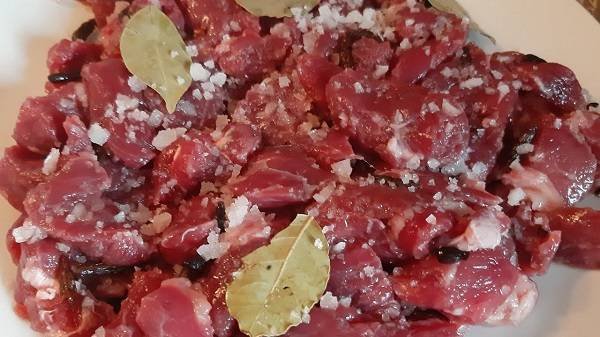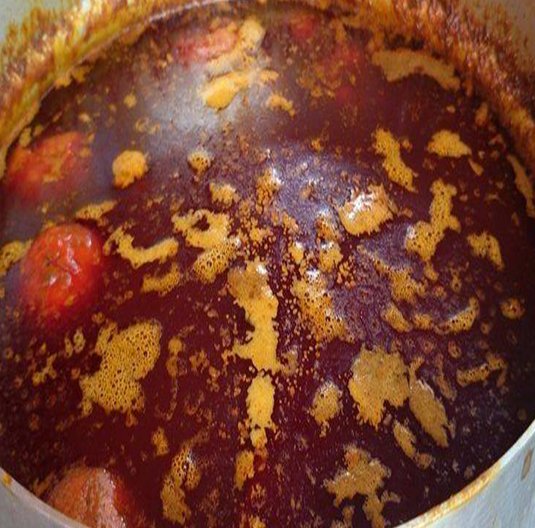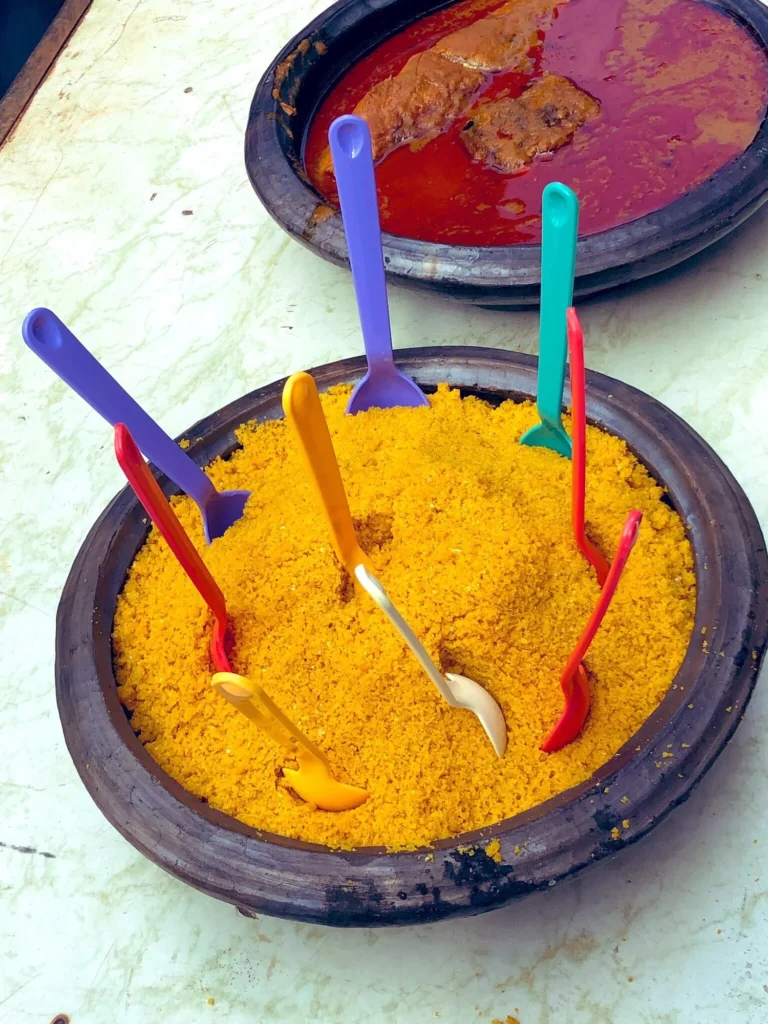Nutrition
Homemade Ghanaian salted beef

Homemade Tolo beef
In Ghana, salted beef is commonly used as a flavour enhancer in soups, stews, and sauces. It is added to dishes when cook ing to infuse a rich, salty, and slightly fishy flavour.
It adds a unique taste and flavour to tra ditional Ghanaian recipes.
Ingredients
• 2 pounds of beef
• 1 cup of salt
• 1 tablespoonful of ground ginger
• 1 tablespoonful of ground cloves
• 1 tablespoonful of ground coriander
• Water for boiling
Preparation
-Rinse beef under cold water and pat it dry with paper towels. Cut beef into large, manageable pieces.
-Combine the salt, groundginger, ground cloves, ground allspice, ground coriander, and ground black pepper in a bowl and mix.
-Rub spice mixture all over the beef, en suring that it is evenly coated. You can use your hands to massage the spices into the meat for better flavour.
– Place the spiced beef in a large, resealable plastic bag.
-Seal bag, removing as much air as possible. Place the bag of beef in the refrigerator and let it marinate for at least 24 hours or up to 48 hours. The longer it marinates, the stronger the flavours will be.
-After marinating, remove the beef from the refrigerator and rinse off the excess salt and spices under cold water. (Pat the beef dry with paper towels).
-Fill a large pot with water and bring it to boil. Add beef to the boiling water and reduce the heat to low. (Let the beef sim mer gently for about 2-3 hours or until it becomes tender).
-Once the beef is tender, remove it from the pot and let it cool. Slice beef into thin strips or chunks, depending on your preference.
-Store salted beef in an airtight container in the refrigerator for up to one week.
-Enjoy y
Salted beef
Ingredients
• 10 strawberries,
• 3 fingers of banana
• 100 millimetres of orange juice
Preparation
-Wash strawberries, banana and blend
– Add orange juice to strawberries, banana and blend
until smooth.
-Pour the smoothie into a tall glass and serve.
Source: receipejoint
Nutrition
The role of Civil Society in advancing the fight against malnutrition
Malnutrition continues to undermine the health, learning, and future productivity of Ghana’s children. If left unaddressed, it will slow down national development and widen inequalities. Tackling this challenge requires not only government action but also the active and strategic involvement of Civil Society Organisations (CSOs).
How CSOs can step up
To make a lasting impact, CSOs should consider the following roles in the fight against malnutrition:
Amplify nutrition advocacy
CSOs must use their platforms to keep nutrition high on the national agenda. By engaging parliament, district assemblies, and local leaders, they can push for stronger commitments and sustained investment in nutrition policies and programs.
Strengthen community education
Beyond raising awareness, CSOs should design practical, culturally relevant education campaigns that show families how to prepare balanced meals using locally available foods. Demonstrations, cooking classes, and peer-to-peer learning can make nutrition knowledge more actionable.
Leverage technology for wider reach
With mobile phones and social media widely used in Ghana, CSOs should adopt digital tools such as WhatsApp groups, SMS campaigns, and short educational videos to reach parents and young people with timely nutrition tips.
Build Stronger Coalitions
By collaborating across networks, CSOs can pool resources, share lessons, and amplify their voice in policy advocacy. A united civil society front makes it harder for decision-makers to ignore nutrition issues.
Hold Government Accountable
CSOs should actively monitor the implementation of nutrition-related policies and budget allocations. Through scorecards, citizen reports, and media engagement, they can ensure promises made translate into real benefits for communities.
The Way Forward
Malnutrition is not just a health issue; it is a national development concern. CSOs, with their grassroots presence and advocacy strength, are uniquely positioned to drive change. By sharpening their focus, deepening partnerships, and holding institutions accountable, they can accelerate progress toward a healthier, stronger Ghana.
The fight against malnutrition is everyone’s responsibility, but CSOs must remain at the forefront ensuring that no child is left behind because of poor nutrition.
Feature article by Women, Media & Change under its Nourish Ghana: Advocating for Increased Leadership to Combat Malnutrition Project
Nutrition
‘Kpokpoi’

‘Kpokpoi’ is a traditional meal of the Gas during their annual Homowo festival.
It is prepared with primary ingredients of steamed and fermented cornmeal, palmnut oil and okro.
Ms Alberta Dede Kuma Tackey, Chief Executive Officer of Tackey’s Kitchen takes readers through how ‘Kpokpoi’ is prepared.
Ingredients
– 1 kilogram of maize
– 2 kilogram of palm nut
– 5 fingers of okro
– 5 large fresh tomatoes
– 5 large smoked fish (salmon)
– 7 large fresh pepper
– 2 small ginger
– 2 garlic
-salt
Preparation of Palmnut soup
– Wash palm nuts and boil it for about 50 minutes.
– When ready pour the boiled nuts into a mortar and pound until the nuts look fibrous and the black kernels are loose.
-Pour the mixture into a large bowl and add water (Use your hand to take the fibre part of the mixture until you get liquid free of fibre and kernels. (Use a colander to separate the juice from the fibre)
– Wash fish with clean water and put it on fire.
– Blend ginger, onion, pepper, garlic and add to fish.
– Add salt and steam the mixture for about 4-6 minutes.
-Wash fresh tomatoes and add it to the steaming pot.
– Proceed with pouring the palm nut solution over the steaming pot with fish, and others.
– Blend steamed tomato and add to the mixture
– Stir and leave soup to cook for some time (Stirring thoroughly and carefully to prevent the dry fish from breaking into pieces).
Corn for ‘Kpokpoi’
-Remove any bad grain or stones from maize. (Soak corn overnight or three days)
– Wash in clean water and grind into smooth flour.
– Sprinkle water on the ground maize and leave it for some time.
– Pour the corn flour into a bowl and flake with your hands to make flour smooth. (You can also sieve the milled corn on a wooden mat)
-Fill a saucepan with water to about halfway and place a clay pot steamer or any utensil that has little bits of holes in them that steam can pass through.
– When the water starts boiling sprinkle corn flour in sieve.
– Cover tightly and leave to steam for about 15 minutes.
– When ready, fetch red oil and mix with the steamed corn to get the yellowish colour.
-Also prepare salt water which will be sprinkled onto the steam corn flour before pounding and set aside.
– Pour yellowish mixture into mortar, sprinkle a little bit of salt water, palm oil onto it and start pounding.
– Pour out into a bowl. You can choose to add cooked okro to it.
-Sieve the pounded ‘kpokpoi’ using the wooden sieve. This makes it finer and separates the rough clumps from the others.
-Serve with your already cooked palm-nut soup.
By Linda Abrefi Wadie






